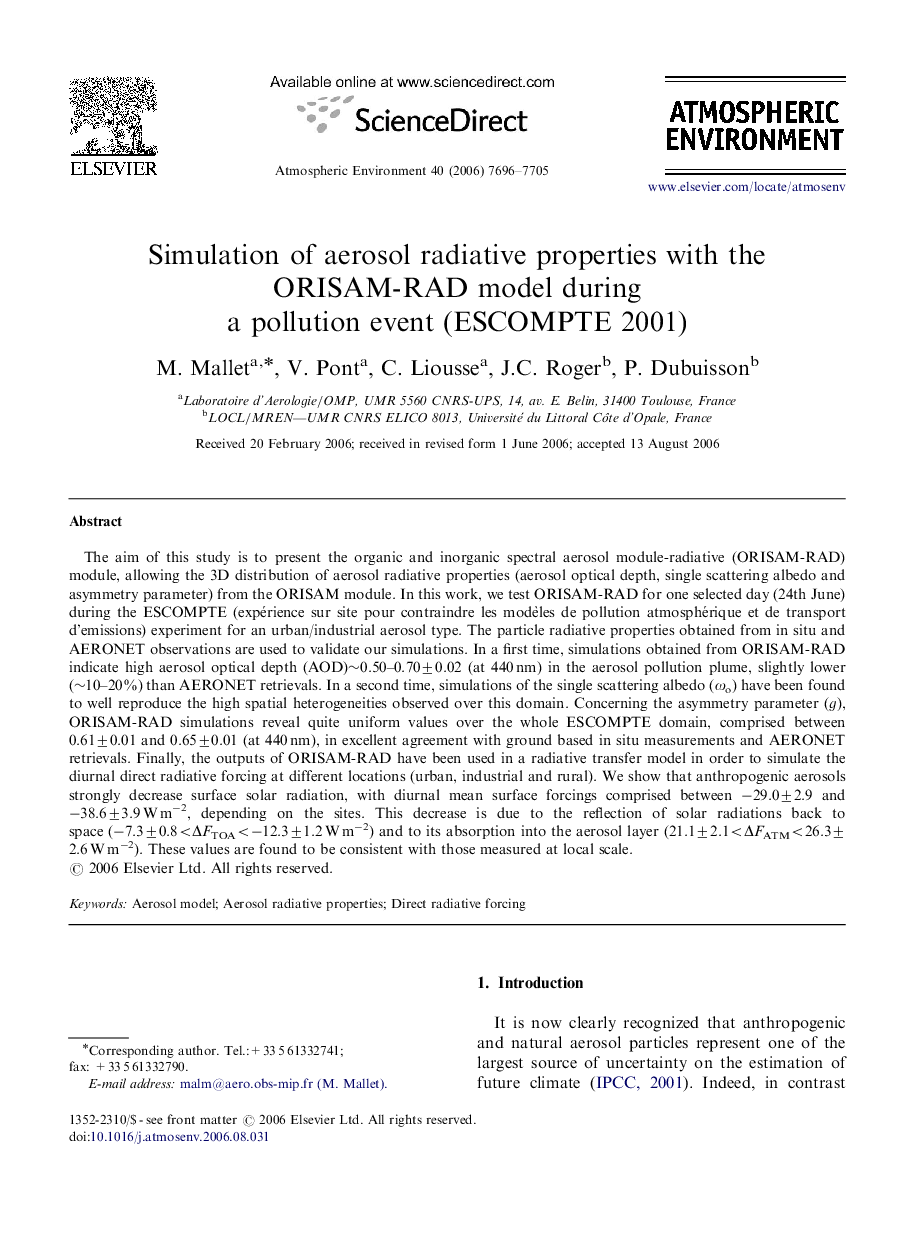| کد مقاله | کد نشریه | سال انتشار | مقاله انگلیسی | نسخه تمام متن |
|---|---|---|---|---|
| 4444446 | 1645549 | 2006 | 10 صفحه PDF | دانلود رایگان |

The aim of this study is to present the organic and inorganic spectral aerosol module-radiative (ORISAM-RAD) module, allowing the 3D distribution of aerosol radiative properties (aerosol optical depth, single scattering albedo and asymmetry parameter) from the ORISAM module. In this work, we test ORISAM-RAD for one selected day (24th June) during the ESCOMPTE (expérience sur site pour contraindre les modèles de pollution atmosphérique et de transport d’emissions) experiment for an urban/industrial aerosol type. The particle radiative properties obtained from in situ and AERONET observations are used to validate our simulations. In a first time, simulations obtained from ORISAM-RAD indicate high aerosol optical depth (AOD)∼0.50–0.70±0.02 (at 440 nm) in the aerosol pollution plume, slightly lower (∼10–20%) than AERONET retrievals. In a second time, simulations of the single scattering albedo (ωo) have been found to well reproduce the high spatial heterogeneities observed over this domain. Concerning the asymmetry parameter (g), ORISAM-RAD simulations reveal quite uniform values over the whole ESCOMPTE domain, comprised between 0.61±0.01 and 0.65±0.01 (at 440 nm), in excellent agreement with ground based in situ measurements and AERONET retrievals. Finally, the outputs of ORISAM-RAD have been used in a radiative transfer model in order to simulate the diurnal direct radiative forcing at different locations (urban, industrial and rural). We show that anthropogenic aerosols strongly decrease surface solar radiation, with diurnal mean surface forcings comprised between −29.0±2.9 and −38.6±3.9 W m−2, depending on the sites. This decrease is due to the reflection of solar radiations back to space (−7.3±0.8<ΔFTOA<−12.3±1.2 W m−2) and to its absorption into the aerosol layer (21.1±2.1<ΔFATM<26.3±2.6 W m−2). These values are found to be consistent with those measured at local scale.
Journal: Atmospheric Environment - Volume 40, Issue 40, December 2006, Pages 7696–7705